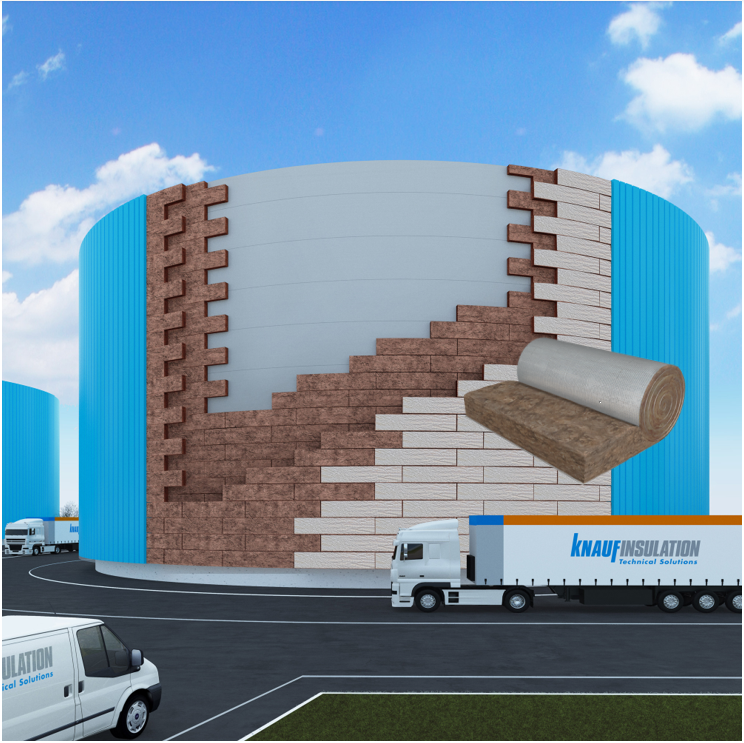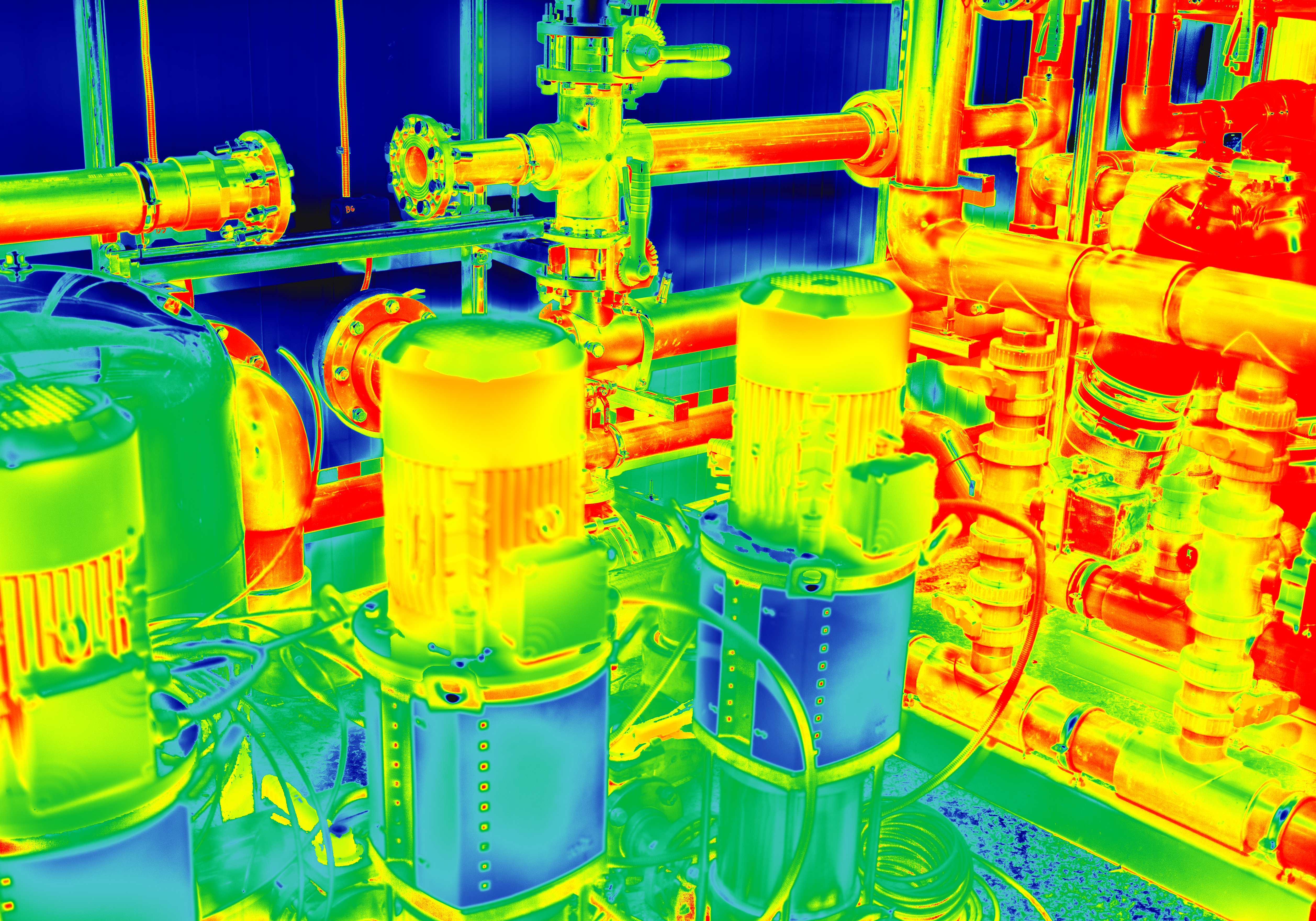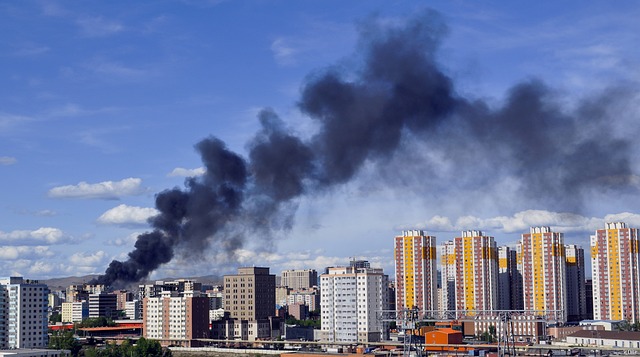- Group websites
- Knauf Insulation worldwide
- Corporate
- Albania
- Algeria
- Australia
- Austria
- Belgium
- Bosnia
- Bulgaria
- Canada
- Croatia
- Czech Republic
- Denmark
- Estonia
- Finland
- France
- Germany
- Greece
- Hungary
- Italy
- Japan
- Kazakhstan
- Latvia
- Lithuania
- Luxembourg
- Macedonia
- Malaysia
- Mexico
- Montenegro
- Morocco
- Netherlands
- New Zealand
- Norway
- OEM
- Poland
- Portugal
- Romania
- Russia
- Serbia
- Singapore
- Slovakia
- Slovenia
- South Africa
- South Korea
- Spain
- Sweden
- Switzerland
- Tunisia
- Turkey
- UAE
- USA
- Ukraine
- United Kingdom
- Knauf Insulation worldwide
- Group websites
- Knauf Insulation worldwide
- Corporate
- Albania
- Algeria
- Australia
- Austria
- Belgium
- Bosnia
- Bulgaria
- Canada
- Croatia
- Czech Republic
- Denmark
- Estonia
- Finland
- France
- Germany
- Greece
- Hungary
- Italy
- Japan
- Kazakhstan
- Latvia
- Lithuania
- Luxembourg
- Macedonia
- Malaysia
- Mexico
- Montenegro
- Morocco
- Netherlands
- New Zealand
- Norway
- OEM
- Poland
- Portugal
- Romania
- Russia
- Serbia
- Singapore
- Slovakia
- Slovenia
- South Africa
- South Korea
- Spain
- Sweden
- Switzerland
- Tunisia
- Turkey
- UAE
- USA
- Ukraine
- United Kingdom
- Knauf Insulation worldwide
- Home
- This is how insulation will play its part in a decarbonisation of industry in EU
This is how insulation will play its part in a decarbonisation of industry in EU
Two ambitious goals set by The European Union are to reduce greenhouse gas emissions by at least 55% by 2030 and to be climate-neutral by 2050, with net zero CO₂ emissions. Decarbonising EU industry is one of the major challenges to reach this target and it is energy-efficient insulation systems that will help industry to reduce CO₂ costs and contribute towards this new and ambitious climate targets. The European Industrial Insulation Foundation Study 2021 sheds light on enormous potentials of money and energy savings that consequently reduce GHG emissions - setting the industry on the right course towards the year 2050.
The recently published EiiF (The European Industrial Insulation Foundation) Study 2021 reveals that 14 Mtoe (million tons) of energy can be saved by improving insulation standards in industry, offering the potential to reduce EU’s CO2 emissions by 40 Mt every year. Considering the current annual level of CO2 emissions in EU 27 (EEA 2017: 3.853 Mt), it is clear that this goal can only be achieved with the support and participation of all key sectors including the EU’s industry and energy supply, accounting for 49% (EEA 2017) of EU’s emissions.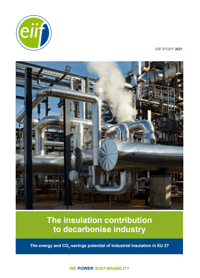
On the upside, there are widely available and effective short-term industrial insulation solutions, which are cost-effective to the asset owners. Power-teK insulation for industrial application developed by Knauf Insulation is ideal for the job and can easily meet the various industry specific needs.
According to EiiF's analysis, industrial insulation can deliver annual energy savings of 14 Mtoe. This amount is equivalent to the annual energy consumption of 10 million European households.
Knowing and eliminating the weak-spots brings speedy results
TIPCHECK is a standardized thermal energy auditing tool, in line with EN 16247 and ISO 50002, to evaluate the performance of industrial insulation systems. It stands for Technical Insulation Performance Check, which evaluates insulation systems of existing facilities, planned projects or retrofits and demonstrates how more efficient insulation could save energy, save money and contribute to a cleaner environment through reduced CO2 emissions. In addition to energy efficiency potentials, TIPCHECK can also help to identify process efficiency improvements and safety risks to personnel and equipment.
TIPCHECK identifies the spots with complete energy saving potential that can consequently bring a fast payback time of most often one year or even less. The scope of a typical TIPCHECK usually includes uninsulated lines, lines with damaged insulation and insulated lines (however, any other application in industry can be included).
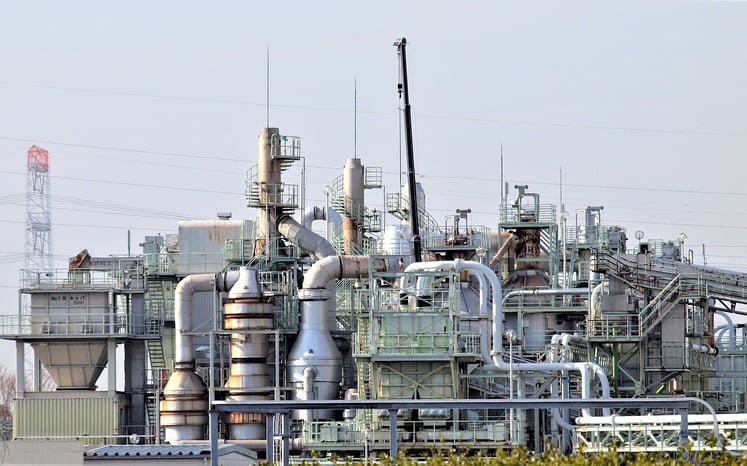
“Each company can contribute to 2050 targets – with proper insulation we can reduce the heat and energy losses by 88%”, says Andreas Wald, Certified TIPCHECK engineer at Knauf Insulation.
TIPCHECKs are carried out by the EiiF and/or certified TIPCHECK engineers. Every year the EiiF organizes qualified trainings for insulation engineers, asset owners, energy auditors, energy managers and consultants to train them how to perform standardized high-quality thermal energy audits, so-called TIPCHECKs. The engineers passing the course get their TIPCHECK engineer certification and become TIPCHECK engineers. That way they gain access to a software EiiF developed to calculate heat losses based on the measured surface temperatures.
Experience gained over the course of about 2.500 TIPCHECK thermal audits carried out worldwide shows that insulating uninsulated equipment and repairing damaged insulation offers payback periods of two years on average and often just a few months.
There is plenty of room for improvement
EiiF’s TIPCHECK experience, with about 2.500 thermal energy audits carried out over the past 10 years, shows that industry is using insulation systems which are neither cost-effective under current market conditions nor energy efficient. Old and outdated technical specifications, mainly focusing on process and safety requirements, are still widely used in industry today. It is also observed that, in many cases, thermal insulation in industry is poorly maintained and parts remain uninsulated. This practice results in excessive heat losses and, as a consequence, high levels of avoidable greenhouse gas emissions.
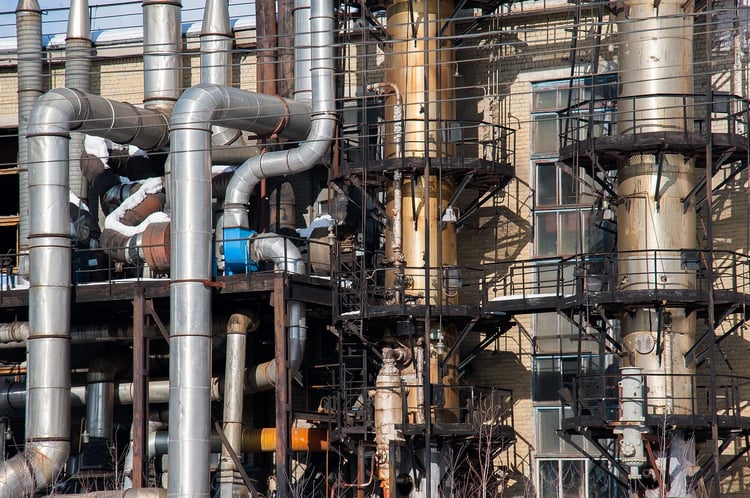
Industry experience in general shows that in a typical European plant 2-10% of insulation is damaged or missing.
From EIIF Study 2021
Industry experts point out that most plants are operated with insulation systems designed to meet safety criteria, that is defining the maximum surface temperature, condensation prevention, process needs or just a generic maximum density of the heat flow rate. Specifications which call for cost-effective and energy-efficient solutions are an exception.
Density of the heat flow rate of current insulation systems over surfaces without insulation or with damaged insulation at different temperatures shown in a table below (courtesy of Eiif) gives a clear picture of the energy losses and great potentials for upgrade.
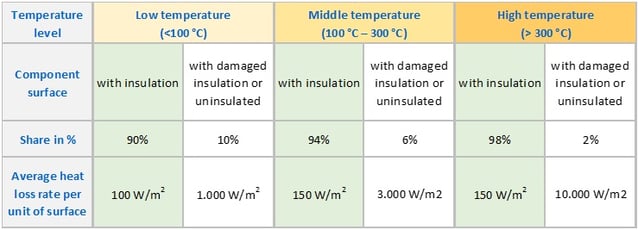
Any combustion process for creating energy has CO2 eq. emissions associated with it. The following values have been considered to estimate the emissions related to the energy loss over surfaces by energy source in the EU: Gas 238 gr CO2 eq./kWh, Coal 380 gr CO2 eq./kWh, Oil 317 gr CO2 eq./kWh, Biomass 197 gr CO2 eq./kWh, Heat 40 gr CO2 eq./kWh.
The estimated current 16,7 Mtoe of energy loss over surfaces which are or can be insulated represents 48 Mt of CO₂ eq. emissions in EU 27.
From EIIF Study 2021
Based on the results of their study, EIIF recommended the introduction of energy-efficient insulation standards and to significantly increase the number of insulation inspections to quickly tap existing potential. In doing so EU can count on multiple benefits.
For the climate
- Cutting annual CO2 eq. emissions by 40 Mt
- Reducing energy consumption in industry by 14 Mtoe every year – equivalent to the energy consumption of 10 million households
For Europe
- Contributing towards net zero in 2050 (Green Deal)
- Creating and saving jobs in Europe (Green Recovery)
For industry
- Increasing competitiveness (reducing production costs)
- Offering smart investment opportunities with rapid payback
- Creating safer, better working conditions
Even one valve can make a difference
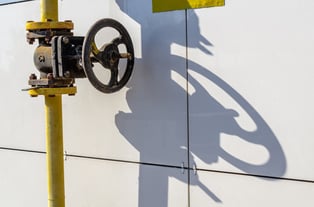
If a standard DN 150/6-inch valve remains uninsulated and the medium temperature of the process is at a temperature of 150 °C all year (operational time 8.760 hours), the annual energy loss for this one valve is 10.600 kWh.
By insulating the valve with a standard an d cost-effective insulation solution, about 10.000 kWh can be saved and an energy loss of only 600 kWh remains. To get a better idea of the impact, the saved 10.000 kWh of thermal energy could be transformed with a thermodynamic efficiency of 40% into 4.000 kWh of electric energy. Using the 4.000 kWh to charge the battery of an electric car enables it to drive more than 20.000 km.
With the clear results and vast savings within the reach, 3 out of 4 TIPCHECK clients immediately invest or plan to invest in the recommended insulation solutions after a TIPCHECK audit. Taking into the account the very short payback periods making improving insulation a very attractive investment.
Are you ready to take part and co-create a new greener EU? Apply for TIPCHECK audit and get ahead of the competition and in line with 2050 net zero EU agenda at the same time.
Blog written by: Luka Klemen, DBP Brand Design Studio



